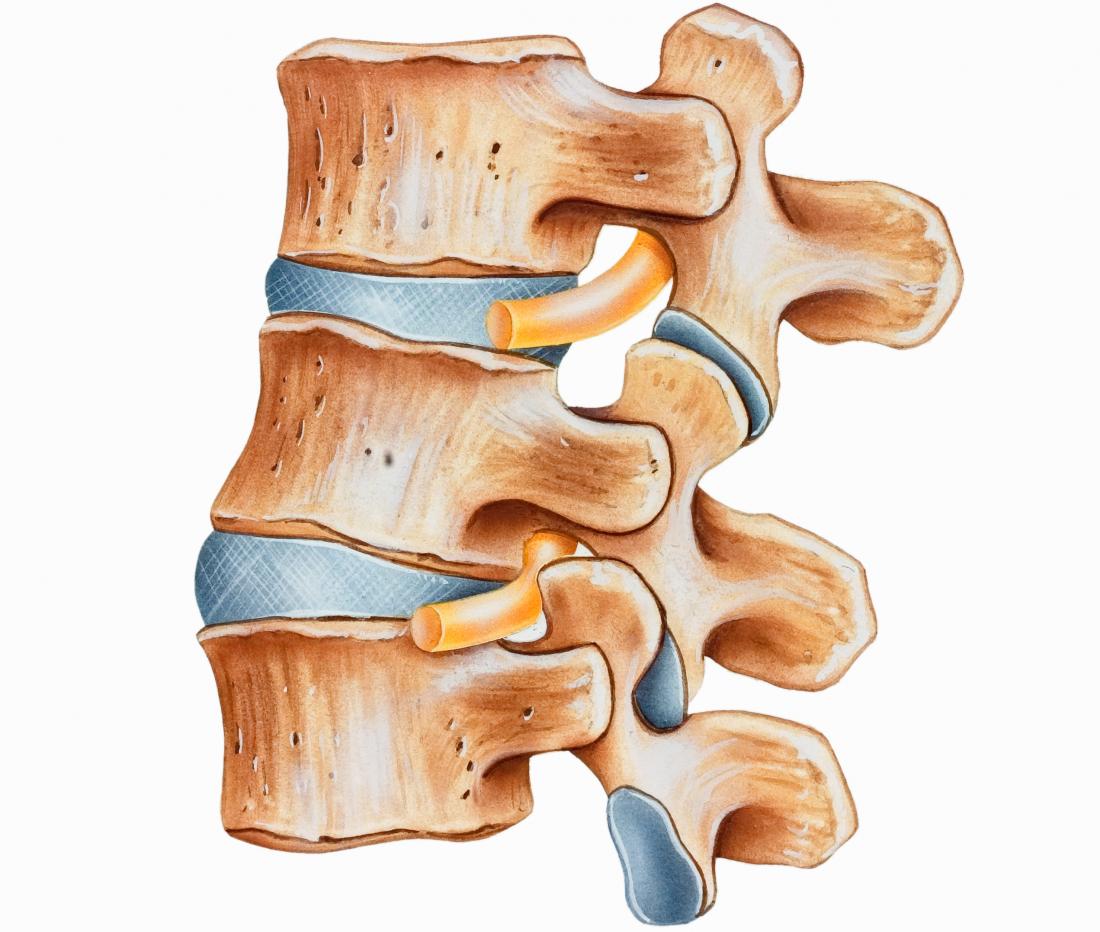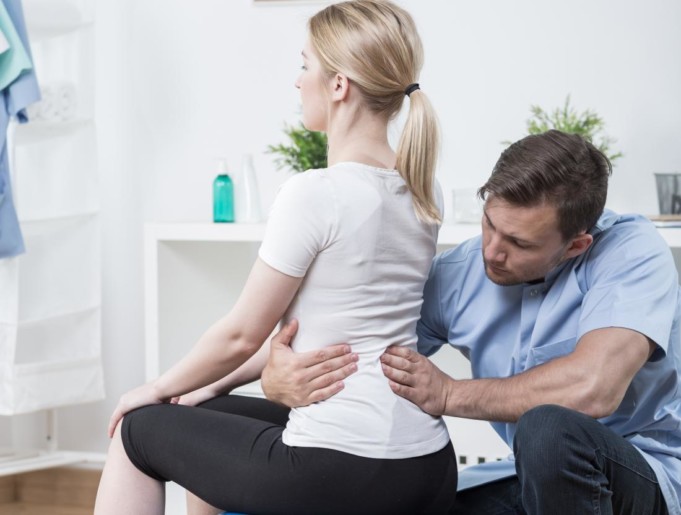Hyperlordosis is the condition where there is an extreme spine arc in the lower back. Hyperlordosis forms a characteristic C-shaped arc in the lumbar region, or lower back, right where the spine bends inward above the buttocks.
This often happens as a result of a lack of exercise or poor posture.
In this article, we take a look at hyperlordosis, its causes, symptoms, treatment, as well as a list of exercises that may help to relieve symptoms.
Symptoms
Hyperlordosis can lead to muscle stiffness and tightening in the lower back. It can also cause damage to the spine and soften tissues in the lumbar area.
Patients with hyperlordosis may experience symptoms that include;
- A curved spine: Hyperlordosis can cause excess curvature of the spine, especially in the lower back, causing the buttocks and the abdomen to appear more prominent.
- Lower back pain: People with hyperlordosis may suffer mild to severe pain in their lower back, which may become is worse with movement.
Causes
Many factors may lead or contribute to patients having hyperlordosis, including:
Obesity
Obesity may lead to the presence of too much fat in the buttocks and abdomen. This puts extra pressure on the lower back, which can cause the lumbar spine to bend.
Poor posture
Poor body posture is one of the leading causes of hyperlordosis.
Muscles around the lumbar region may become tighten as it tries to support and stabilize the spinal column when the body is in a seated position. This increasingly pulls the spine out of its natural alignment, resulting in increased spine curvature.
An individual with a job that requires them to be in a seated position for an extended period is at higher risk of experiencing hyperlordosis.
Lack of exercise
Asides the increased risk of having obesity, people who don’t exercise can depress the core muscles that form around the pelvis and the trunk. These weakened muscles give way for the spine to bend excessively since they are less able to hold the spinal column.
Spinal conditions
Hyperlordosis in some cases could be the result of other underlying spinal complications like discitis, kyphosis, and spondylolisthesis.
Diagnosis
Diagnosing hyperlordosis can be a bit difficult as there is a vast variation in natural spine (lower) curvature in everyone.
An X-ray may be used to measure the curvature of a patient’s spine, but a medical doctor may request an MRI (magnetic resonance imaging) or a CT scan (computed tomography) if they notice an abnormality in the soft tissue is causing the hyperlordosis.
Treatment
Patients may be placed on anti-inflammatory and pain relief medication to help relieve the painful symptoms of three conditions. Extensive treatment is dependent on the cause of the condition.
A back specialist it a physical therapist may be required if the hyperlordosis is associated with a structural issue in the spine.
In cases where obesity is the contributing factor, doctors may be required to place patients on a weight-loss plan. This would often include physical therapy exercises that help to strengthen and stretch core muscles to improve body posture.
Exercises
A study in 2018 investigated the positive effect of specific exercises on back muscle, lower stone bend, and excess lower back pain.
The people who engaged in the study performed a consistent 60-minute workout that consisted of eight lumbar exercises that focused on increasing spine flexibility and strengthen the back muscles.
The workout was performed for 3 days a week for 12 weeks. The participants experienced a reduction in pain in their lower back after 12 weeks. They also noticed increased lumbar muscle flexibility and strength.
Nonetheless, there wasn’t any significant change in the stone curvature. Some of the exercises included the following lumbar stabilization workout;
Situps
- Lay down with your back on the floor and have your knees bent at an angle of 90 degrees.
- Have your arms crossed across your chest as you lift your torso up to join your thighs.
- Gently lower your torso back to the floor.
Superman exercise
- Lay straight facing down with your hands extended in front of you.
- Synchronously lift your arms, chest, and legs off the floor.
- Hold that position for at least 2 seconds while you exhale.
- Lower your arms, chest, and legs slowly back to the ground while you inhale.
Quadruped leg and arm raise
- Kneel on the floor, then lean forward with your hands placed palm-down.
- Keep your knees in line with your hips and your hands directly below your shoulders.
- Simultaneously raise one arm and stretch your opposite leg in a way that they are both in line with your spine.
- Return to your initial position and repeat the routine.
Squat
- Maintain a standing position when your feet shoulder-width apart.
- Stretch your hands out in front, with hands clasped together.
- Lower your body while facing forward as if you are seated on an imaginary chair. Continue in this position until your thighs are almost as parallel to the floor as you can be. Keep your ankles and knees in line.
- Move through your heels to turn back to the starting position.
Lower body or reverse plank
- Sit down with your legs outstretched in front of you. Then lean back with your back at an angle of 45-degree to the floor.
- Place both hands directly by your sides with your palms facing down. Your arms should be on the same line with your shoulders and a little behind your hips.
- While looking up, lift your hips as you support your weight on your heels and hands. Tighten your flutes and core while keeping your body steady and straight.
- Maintain this position for 10–15 seconds before you lower your body.
Upper body or forearm plank
- Place your knees and forearms on the floor, shoulder-width apart. Make sure that your shoulders and elbows align, and keep your forearms stretched out in front.
- Raise both of your knees off the floor, then push your feet backwards to stretch your body fully. Tilt your head down to make sure your neck is in line with your spine.
- Maintain this position as you tilt your hips up while you tighten your core and buttocks.
Side plank
- Lay on your right side and put your feet together. Bend your left arm at the elbow in such a way that your forearm is in line with your shoulder.
- Contract your muscles and lift your hips till your body establishes a straight line from head to toe.
- Hold the position for as long you can and makes sure you don’t drop your hips.
- Repeat the routine on the opposite side.
Hip bridge
- Bend your knees while lying down, and keep your feet hip-distance apart your heels a few inches away from your buttocks. Put your arms by your side, with your hands close to your hips.
- Clench your glutes and move through your heels to raise the hips upwards. Focus on creating a crosswise line across the top of your body, from your shoulders to your knees.
- Hold the position for a second or two, before lowering back down slowly.
- It is important to spend at least 10 minutes of warming up when working out.
Risk of hyperlordosis

A study in 2017 showed the connection between osteoarthritis or (DJD) degenerative joint disease, and abnormal spine curvature.
We can’t tell exactly which of the conditions leads the other. Nonetheless, the authors of the study suggest that both hypolordosis (this is when the spine is straightened than it’s supposed to) and hyperlordosis put extra pressure on joints, which leads to degenerative joint disease.
When must you see a doctor?
It is imperative that you visit a doctor if the pain in the back worsens. It may also help the diagnosis to keep a diary to help monitor the severity of the pain and how it affects your daily activities.
Medical attention is required if the following are part of the symptom, as they may be an indication of underlying issues;
- Bowel or bladder issues
- Muscle spasms
- A consistent curve in the lower back, even when you bend forward
- Numbness or tingling in the legs, arms, or back
Outlook
Very often, hyperlordosis could be a result of specific lifestyle influences. It helps greatly to maintain a healthy weight and regular exercises can improve complications with lower back pain and posture. It is best to see a doctor if symptoms persist after exercise.
Although very uncommon, other complications in the spine may cause hyperlordosis. An examination may be carried out by the doctor before a diagnosis is determined.
Have you had any experience with hyperlordosis or something similar? What measures did you take to ease pain in your lower back? Share with us in the comments below.












